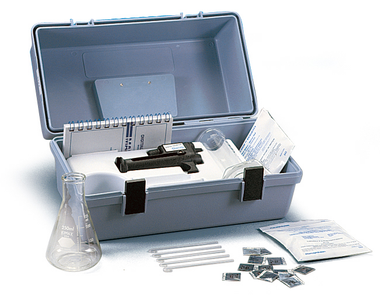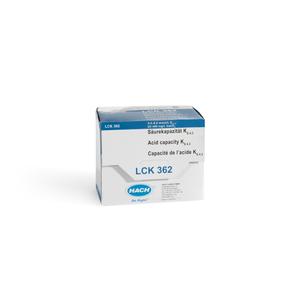
Alkalinity measures the capacity of water to neutralize acids and maintain a stable pH level. It is an important water quality indicator across a variety of applications including drinking water, beverages, boiler/cooling water and wastewater treatment.
High alkalinity water can:
Low alkalinity water can:
Due to alkalinity's wide-ranging impacts, consistently monitor alkalinity is vital to maintaining healthy and stable water. Hach® offers a wide range of testing equipment, resources, training and software you need to successfully monitor alkalinity in your specific process application.
Are you facing the challenge of tight WINEP consent limits? Read more about how Hach can help water companies with online process solutions for alkalinity monitoring.

With the simplicity and accuracy of Hach's alkalinity test kits, you can effortlessly ensure proper alkalinity levels in various field applications using drop count titration and color disc methods.

Precision and reliability for both laboratory and industrial needs. Hach's benchtop alkalinity instruments provide effortless usability.

Hach’s EZ Series online analyzers for alkalinity offer automated titration with unparalleled precision. Get highest performance for industrial and environmental analysis needs.

Compact and versatile, Hach's portable alkalinity instruments are built for on-the-go measurement. Reliable across a range of applications, these instruments provide consistent accuracy and convenience.

Simplify titration with Hach's Titralab AT1000. This automatic system ensures reliable results through application-specific kits - making setup and operation quick and easy.

Hach's range of test strips, reagents and solutions are quick, accurate and reliable. Available for easy analysis in the lab, the plant or the field.
In wastewater treatment, alkalinity is an important parameter in determining the health and stability of various biological treatment processes.
In anaerobic digestion, alkalinity and its ratio to the concentration of volatile fatty acids (VFAs) is the most important measurement for understanding the stability of this biological process. For optimal results, a digester should have a pH value between 6.5 and 7.5. However, just measuring the pH is not enough. In order to ensure sustainable and safe operation, the water must have a sufficient buffering capacity in order to compensate for changes in the acid concentration. A digester that is too acidic is toxic for the bacteria, especially for the methane-producing bacteria. Upsets due to the toxic conditions of low pH can be very costly due to reduced gas production, chemical addition for alkalinity, and significant increase in staff time and effort. Re-seeding an upset digester can take weeks and is very time consuming.
In systems that are required to remove ammonia nitrogen, alkalinity is a key monitoring parameter for stable nitrification. Alkalinity values below 50 mg/L will inhibit the biological conversion of ammonia/ammonium to nitrite then to nitrate. Once alkalinity is depleted in a biological system, pH can begin to rapidly decline. When monitoring aerated biological nitrogen removal, pH is a commonly used and helpful indicator of system nitrification stability, but it is a lagging indicator. For maximum system stability monitoring, alkalinity monitoring is a good predictive measurement to indicate issues before they become critical.

Contact us for tech support, service, sales, or to get a quote.